Private refueling in the air: for whom is the attraction
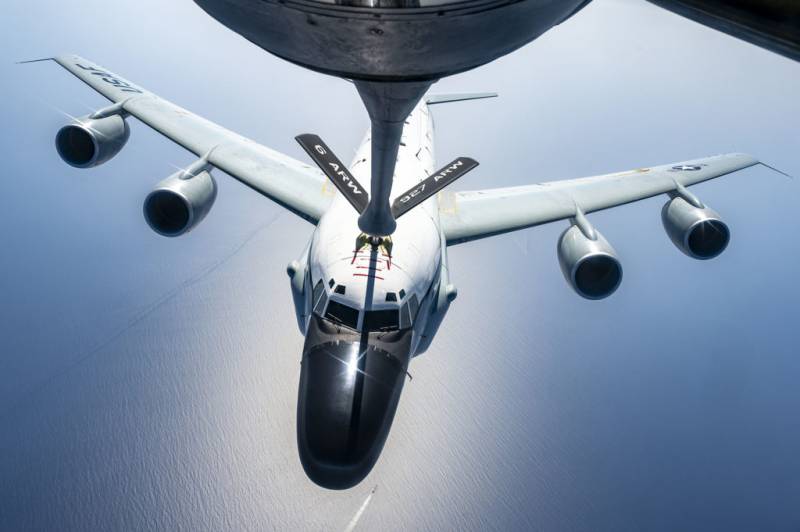
For the first time in stories a private tanker aircraft aerially refueled a US Air Force aircraft. This fact received a very lively discussion, both across the ocean - and in the USA this event was called "historical", and in Europe something was said in this spirit.
Indeed, why put on such a show if, in fact, the Air Force of each country that has its own fleet of tanker aircraft completely covers today's needs. In addition, NATO ties help.
Reserve? More than doubtful, because everything can go wrong. Yes, it may make some sense to carry out such experiments over the United States or in other boundless oceanic airspaces, there is a lot of space there.
But in the skies over Europe, they remember the disaster over the Spanish city of Palomares in 1966, when it was during air refueling that the B-52 and KS-135 collided. Four hydrogen bombs, 25 megatons each, fell on land and into the sea. It's just a miracle that they didn't detonate. But the crews of these aircraft had a raid, as they say, mother do not cry. So it was not in vain that the fabulist Ivan Krylov wrote: “The trouble is, if the shoemaker starts the pies, and the pieman makes the boots.”
Therefore, perhaps, in the sky over Europe, it is worth abstaining, because how much she, old Europe, is populated. And the results of an unsuccessful refueling performed by a private trader can fall on an unsuspecting town.
Although, again, capitalism, the market, money, big money...
But I would not like to talk about sad things, I planned to just look back to remember how it all began.
A bit of history
Literally from the first days, when airplanes took to the wings, everything was subordinated to the motto: "Faster, higher, further." And if with “faster and higher” every year it turned out better and better, then with “further” it didn’t move very well. No, there were just crazy projects at the beginning of the journey, such as Blériot's flight across the English Channel, then Lindberg swung to the Atlantic ... Probably, then the blood ran cold in the veins of the inhabitants from the idea of how far these plywood products with motors flew.
But I really wanted to, yes.
This is where the idea of transferring fuel in the air was born. Back in 1912, the first attempts were made to transfer canisters from one aircraft to another. Due to the high danger and complexity of maneuvers, this method of transferring fuel was not developed. Did anyone get a canister of kerosene downstairs - history is silent.
A new method of refueling using a rubber hose connecting aircraft tanks was developed by aviator and designer Alexander Prokofiev-Seversky in 1917.
And after digging a little in history, I decided to bring to your attention, as it were, a historical photo essay on how refueling in the air began.
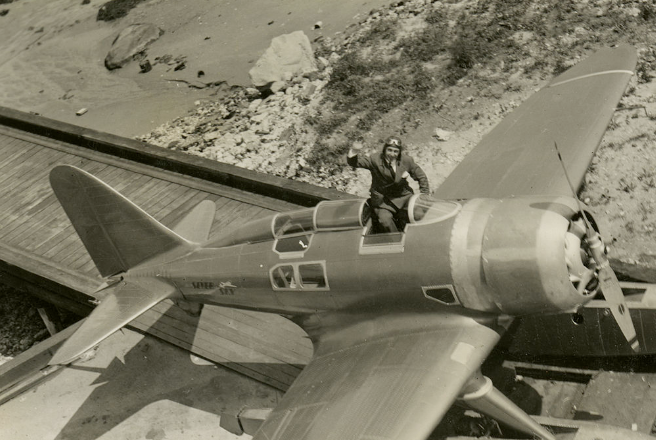
Alexander Seversky in the cockpit of his aircraft "Seversky-3"
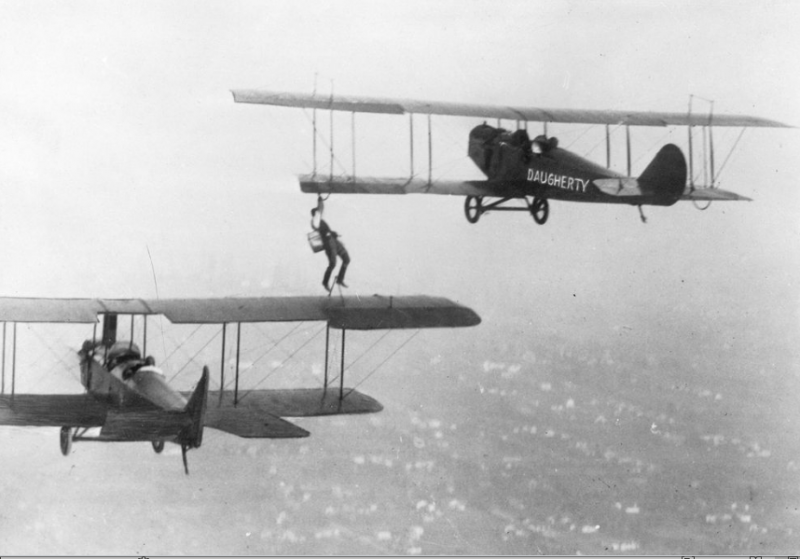
On November 12, 1921, Wesley May crossed Long Beach, switching from a standard J-1 to a Curtis Jenny with 5 gallons of aviation fuel (approximately 19 liters). Clean water stunt.
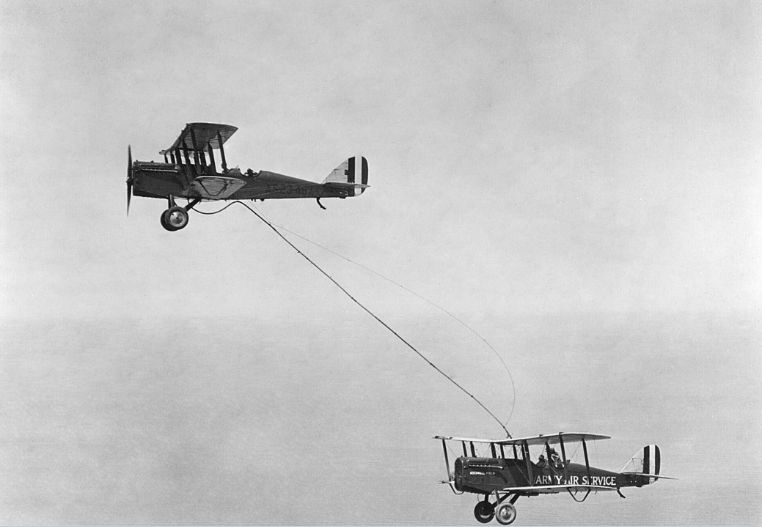
The first successful aerial refueling using the Seversky method was carried out by American pilots in two Airco DH.4 biplanes on June 27, 1923, which allowed them to improve the record in terms of range and flight duration. You can’t imagine anything simpler: two slowly flying aircraft were connected by a hose through which fuel flowed into the refueling aircraft under the influence of gravity.
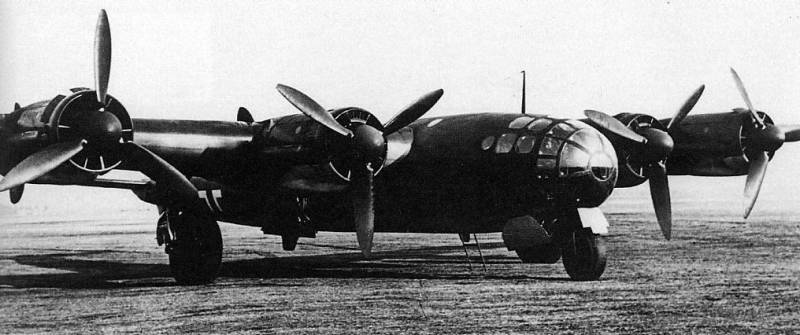
Subsequently, the transfer of fuel began to accelerate with the help of pumps. In 1942, German designers were working on a variant of air refueling of the Me.264 strategic bomber prototype to achieve intercontinental range.
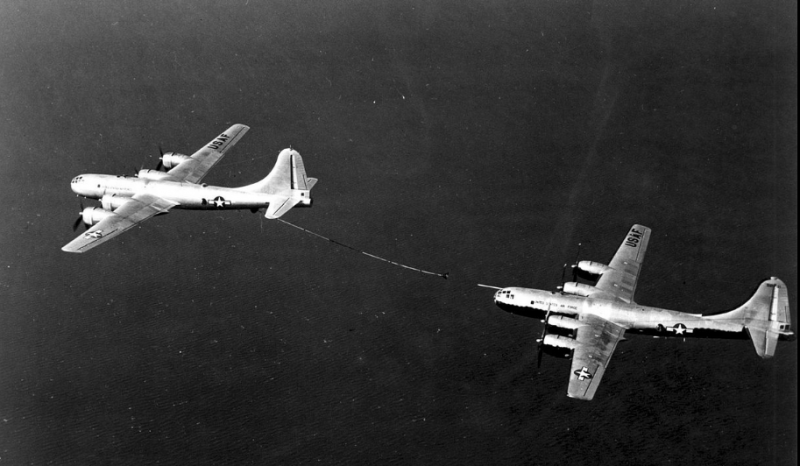
It is worth noting that since 1947 the Americans have built and operated 371 Boeing KB-50s, 282 Boeing KB-29Ms, KB-29 R/Ps and 816 Boeing KC-97s!
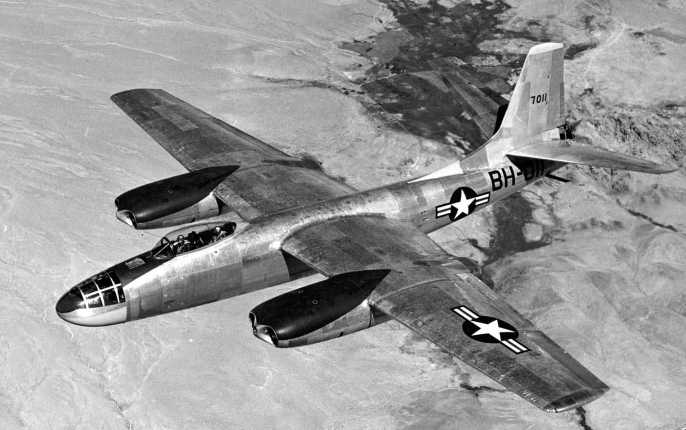
The first jet bomber in the world to perform aerial refueling was the American North American B-45 Tornado.
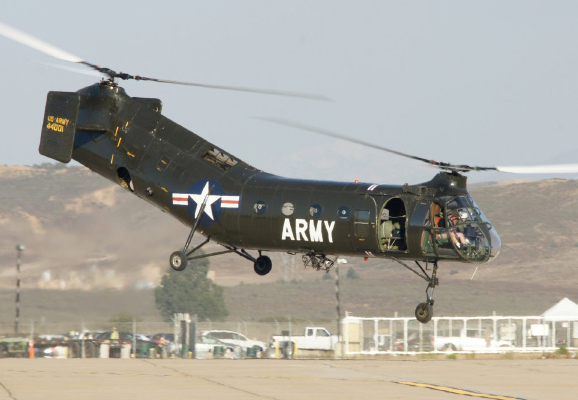
The first in-flight refueling during a combat mission was made during the Korean War in the US Air Force. On July 6, 1951, RF-80 reconnaissance aircraft refueled in the air while flying to photograph objects in North Korea.
During the Vietnam War, the US Air Force mastered and began to practice helicopter air refueling and use it today.
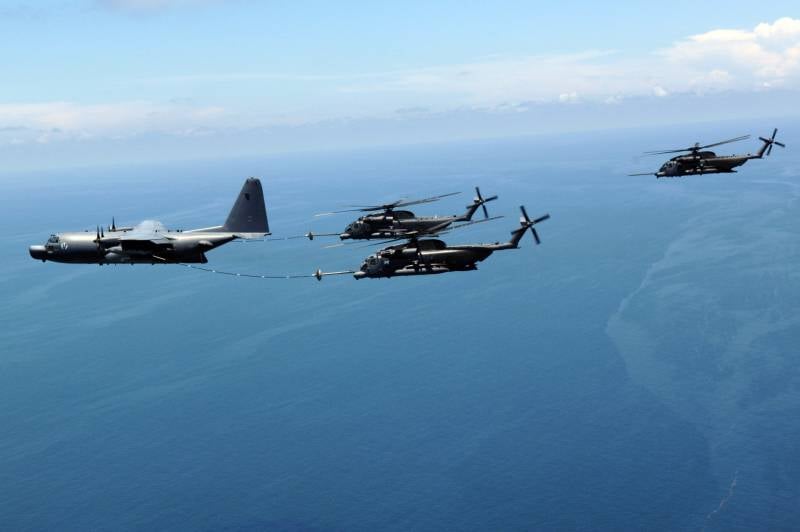
Interesting Facts
Here are some interesting facts I thought.
From February 26 to March 3, 1949, an American B-50 aircraft made the world's first non-stop round-the-world flight, which took 94 hours and 1 minute.
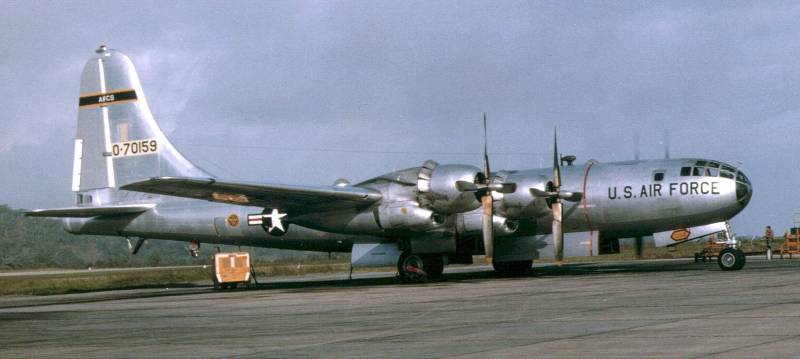
This was made possible thanks to three aerial refueling.

The H-21C helicopter performed the first non-stop transcontinental helicopter flight through the United States (San Diego - Washington, August 23-24, 1957) using four aerial refueling.
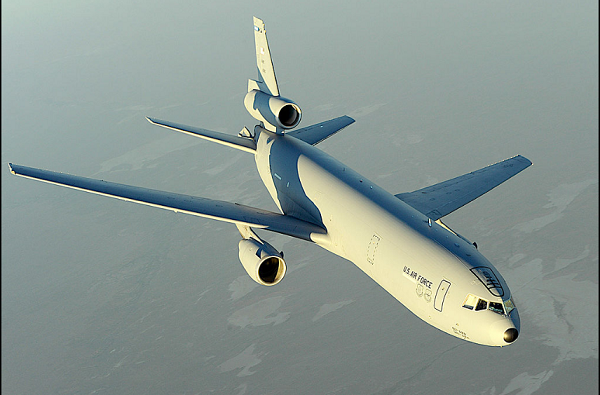
The American tanker aircraft KC-10, which, in addition to additional fuel tanks, has a cargo cabin, is capable of carrying up to 77 tons of cargo.
The American reconnaissance aircraft SR-71, having a take-off weight of 77 kg when fully refueled (of which 100 kg of fuel), did not have the ability to take off with such a load.
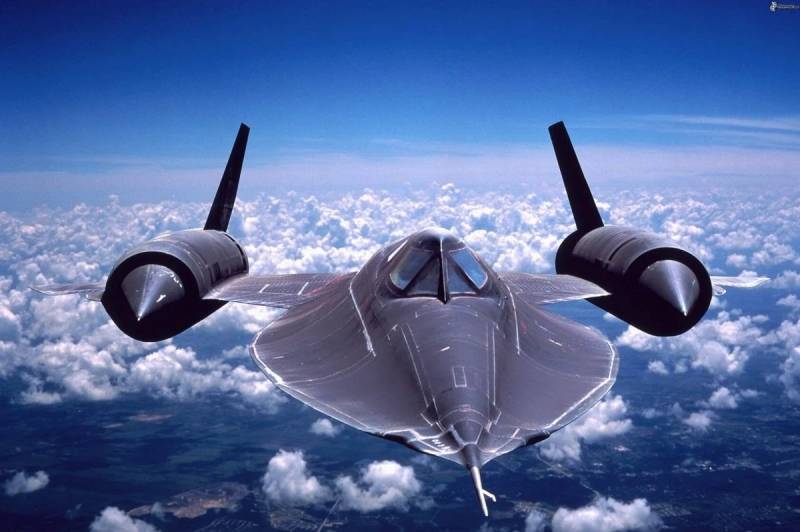
Therefore, at first the plane took to the air with a small supply of fuel, then it was refueled in the air, after which the pilot could begin to complete the task. After full refueling, the aircraft became about twice as heavy.
Northrop Grumman has developed and tested the X-47 Pegasus drone refueling system.
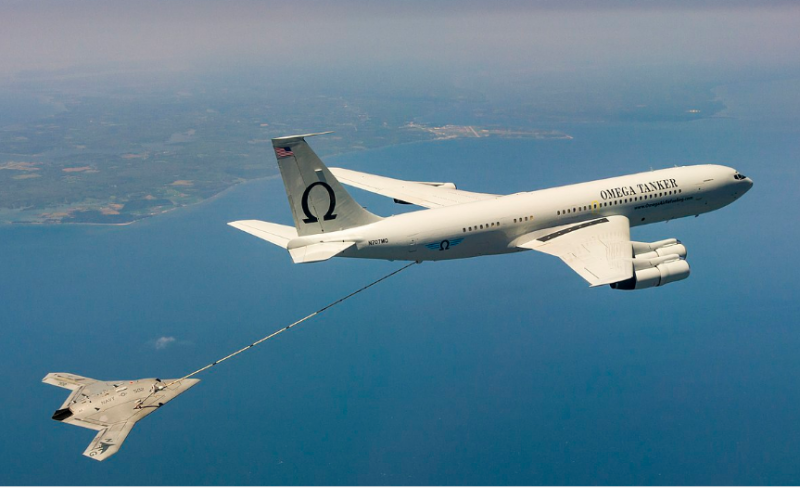
Northrop Grumman X-47B during refueling
As part of the same U.S. Navy UCLASS program to develop a carrier-capable strike UAV for which the X-47 was designed, when its goal was changed to the development of an unmanned tanker aircraft, Boeing created the first prototype aircraft of this class, the Boeing MQ-25 Stingray; for the first time in history aviation performed an aerial refueling of another aircraft in July 2021.
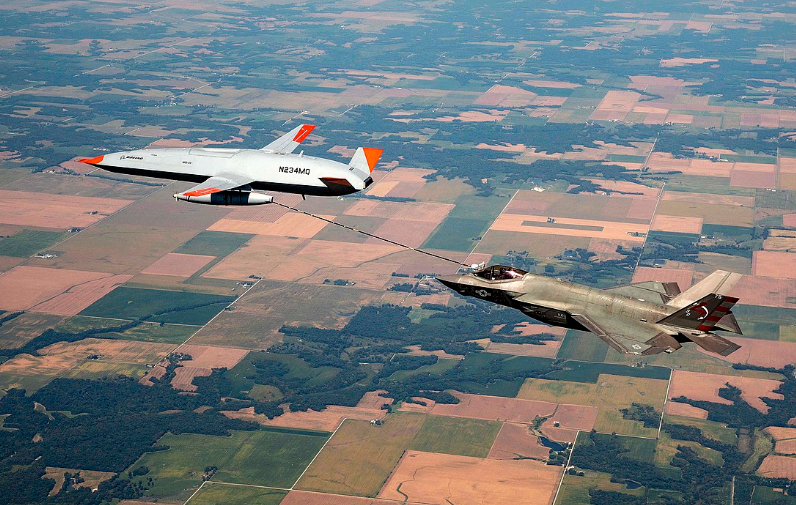
MQ-25 refueling F-35C
The main work "tanker horses" in the US Air Force are the KC-135 and KC-10.
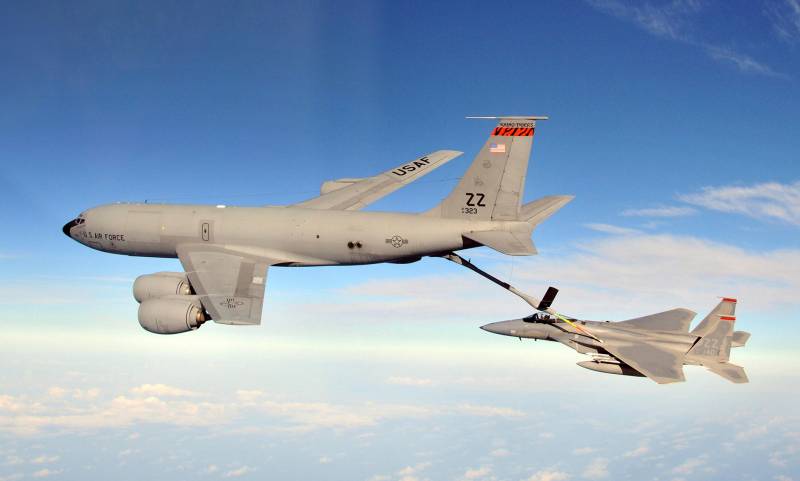
The KC-135 aircraft was developed primarily to increase the range of strategic bombers of the B-52 type, for which a remote-controlled telescopic rod up to 14,3 meters long was created. Initially, it was planned to transfer about half of the tanker's onboard fuel (43,5 tons).
The first prototype serial KC-135, created on the basis of the Boeing 367-80, took off on August 31, 1956. Deliveries to US Air Force Strategic Command at Castle Air Force Base in California began in June 1957. In the future, the aircraft was deeply modernized, with the replacement of engines and on-board systems, which significantly increased its performance.
Currently, 539 KC-135s and various military and research modifications continue to fly as of 2018. They are expected to operate until 2040. In total, 803 aircraft were built.
The McDonnell Douglas KC-10 Extender is an American tanker aircraft based on the DC-10 civil airliner.
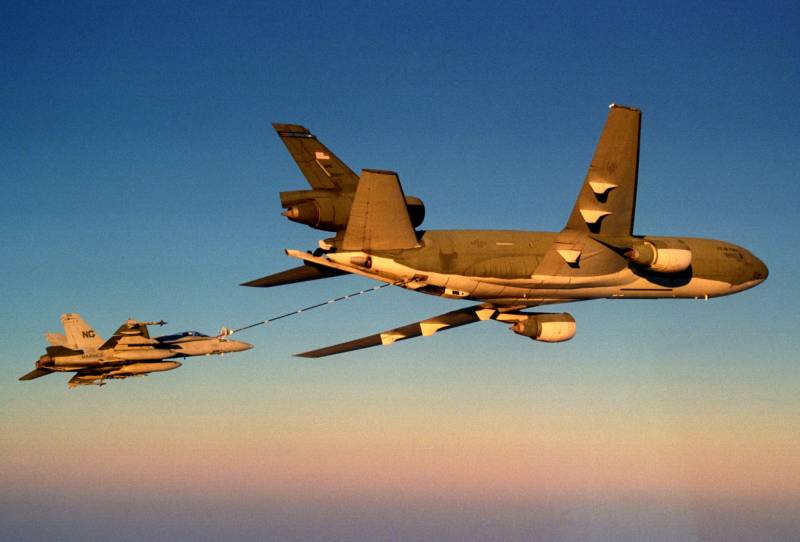
Used by the US Air Force along with older KC-135s. The Dutch Air Force has two KDC-10 aircraft, which are converted DC-10s. According to its characteristics (90 tons of fuel), the KC-10 is designed primarily for interaction with tactical aircraft.
A total of 60 KC-10s were produced for the USAF. Two more were produced for the Netherlands Air Force, where they were named KDC-10.
The Boeing KC-46 is the latest generation of American tanker aircraft. Developed by Boeing based on the Boeing 767.
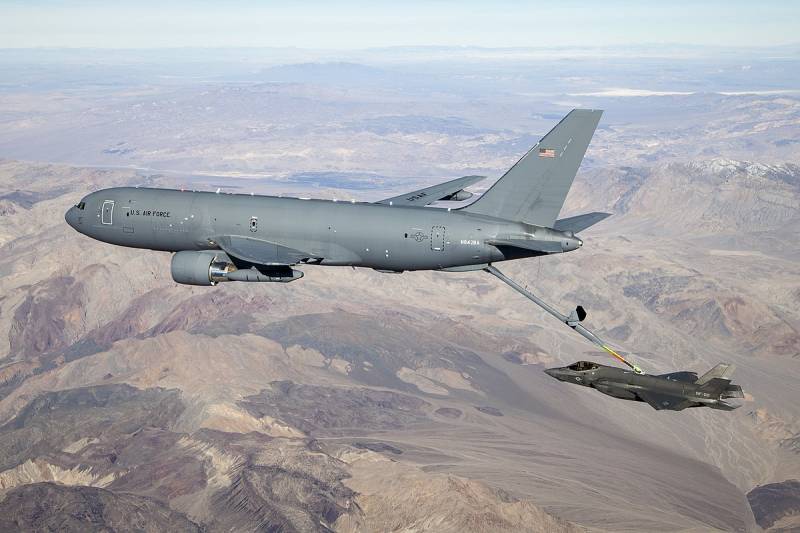
In February 2011, the aircraft was selected by the US Air Force to replace the outdated KC-135 Stratotanker. Fuel for return: 94 kg, which makes the aircraft more than attractive to the Air Force, but the timing of its transfer to the series, as it is fashionable to say today, has shifted to the right - until 198.
Air refueling in the USSR and the Russian Federation
The Soviet Union also developed various air refueling systems. In 1929, a group of designers led by military engineer A.K. Zapanovanny created a working system for pumping fuel in the air. In 1936, even the first refueling of a fighter in the air took place, but the system never entered the stage of practical application.
The system proved to be very complex to be operated by a single pilot, who had to manually catch the end of the hose with the weight attached and guide it into the filler neck. This was not an easy task, especially for aircraft with a closed cockpit. And then the war interrupted the work.
They returned to this idea after the Victory at a new technical level. In the early 1950s, the original idea of transferring fuel on a wing-to-wing basis, developed by test pilots I. I. Shelest and V. S. Vasyanin, was adopted.
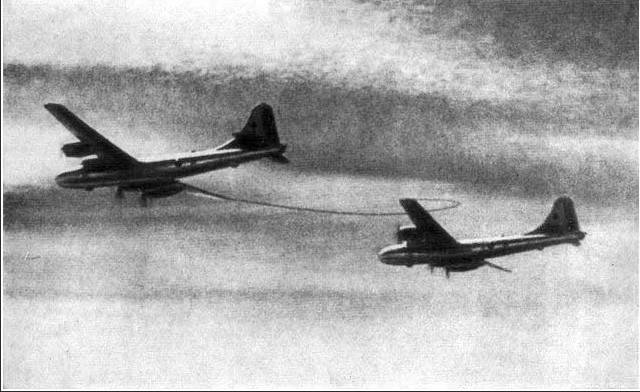
The first tankers based on the Tu-4 entered service in 1951.
Then came the Tu-16.
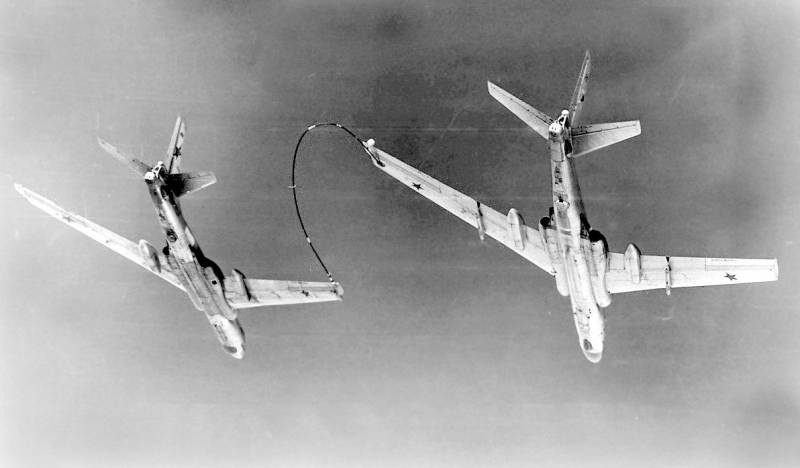
At the end of the 1950s, bombers developed at the Myasishchev Design Bureau (3MN-2, 3MS-2) began to be converted into tankers of the "hose-cone" system.
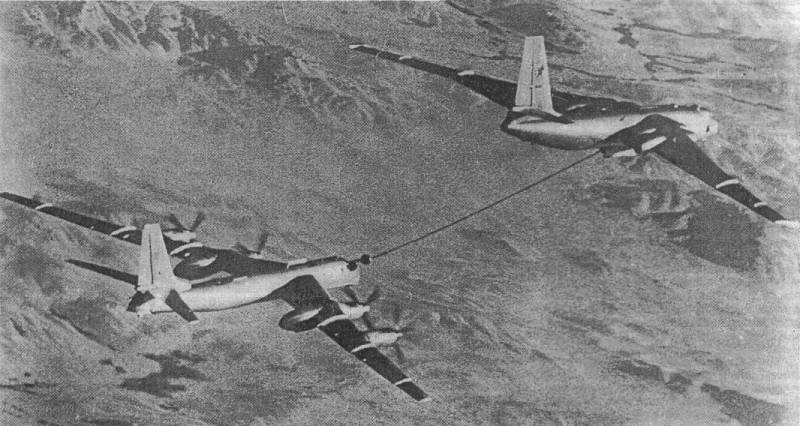
Air tanker 3MS-2 based on the 3M aircraft designed by Myasishchev
The latest generation of Russian air tanker aircraft are Ilyushin Design Bureau aircraft. The Il-76 became the base, the Il-78 was created on their airframe, which still serves today along with a modified version of the Il-78M. It is worth noting that the IL-78M can, of course, deliver up to 94 tons of fuel, depending on the range.
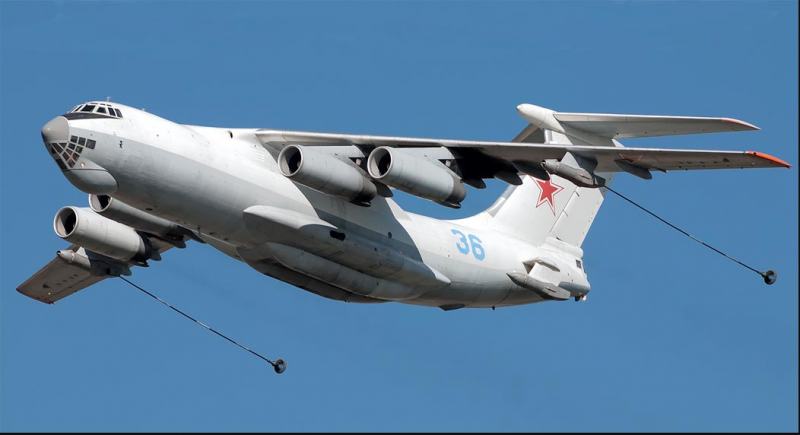
In terms of the number of tanker aircraft in service, Russia ranks fourth in the world after the United States, France and Saudi Arabia.
Private air tankers
"Currently, aerial refueling is only used on military and military transport vehicles."
The information source does not keep up with the events ...
The US Air Force has been exploring the use of third-party tanker aircraft for exercises and non-military operations for many years. This will free up the US Air Force's fleet of regular tanker aircraft. It looks, of course, strange, since the fleet of US Air Force air tankers is simply huge. Apparently, we simply do not have all the information, so the question asked at the beginning of the article remains open.
But the fact is: late last month, a KC-135R Metrea Strategic Mobility tanker aircraft took over the air-to-air refueling of US Air Force aircraft during the Resolute Hunter exercise. From 23 to 29 June he refueled RC-135 Rivet Joint and E-3 Sentry.
And such, one might say, "left" refueling occurs not only in the interests of the US Air Force. It turns out that both Navy and Marine Corps aircraft regularly use commercial aerial refueling services during exercises.
The joint RC-135 Rivet reconnaissance aircraft was the first to refuel. The KC-135R then refueled an E-3 Sentry airborne early warning aircraft. Metrea Strategic Mobility sent their KC-135R to the UK to participate in the Royal International Air Tattoo.
Probably, we are present at the appearance of another private structure working in the interests of the military. So, private air tankers will now be added to all kinds of American PMCs and private air forces (such as the Draken International).
Information